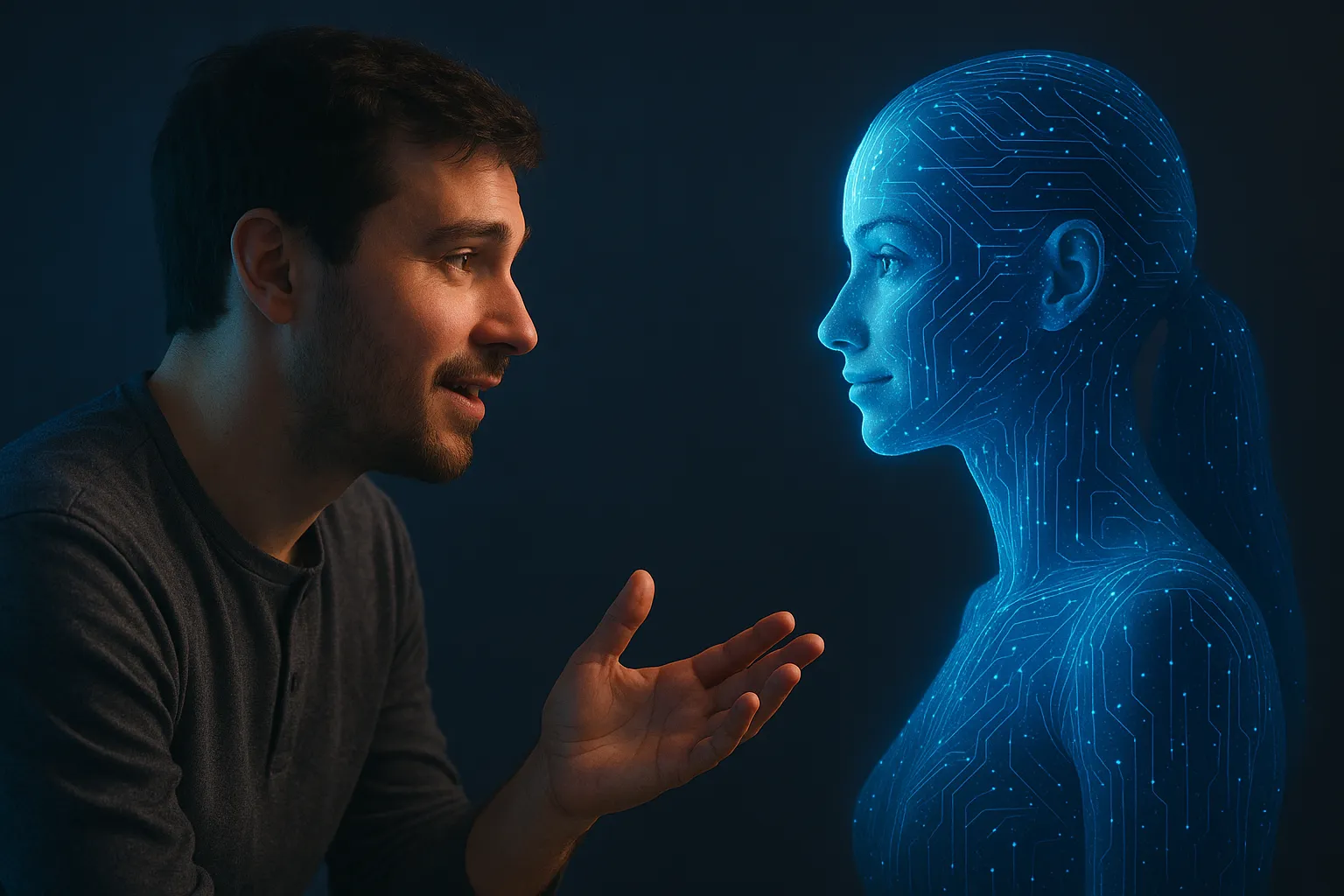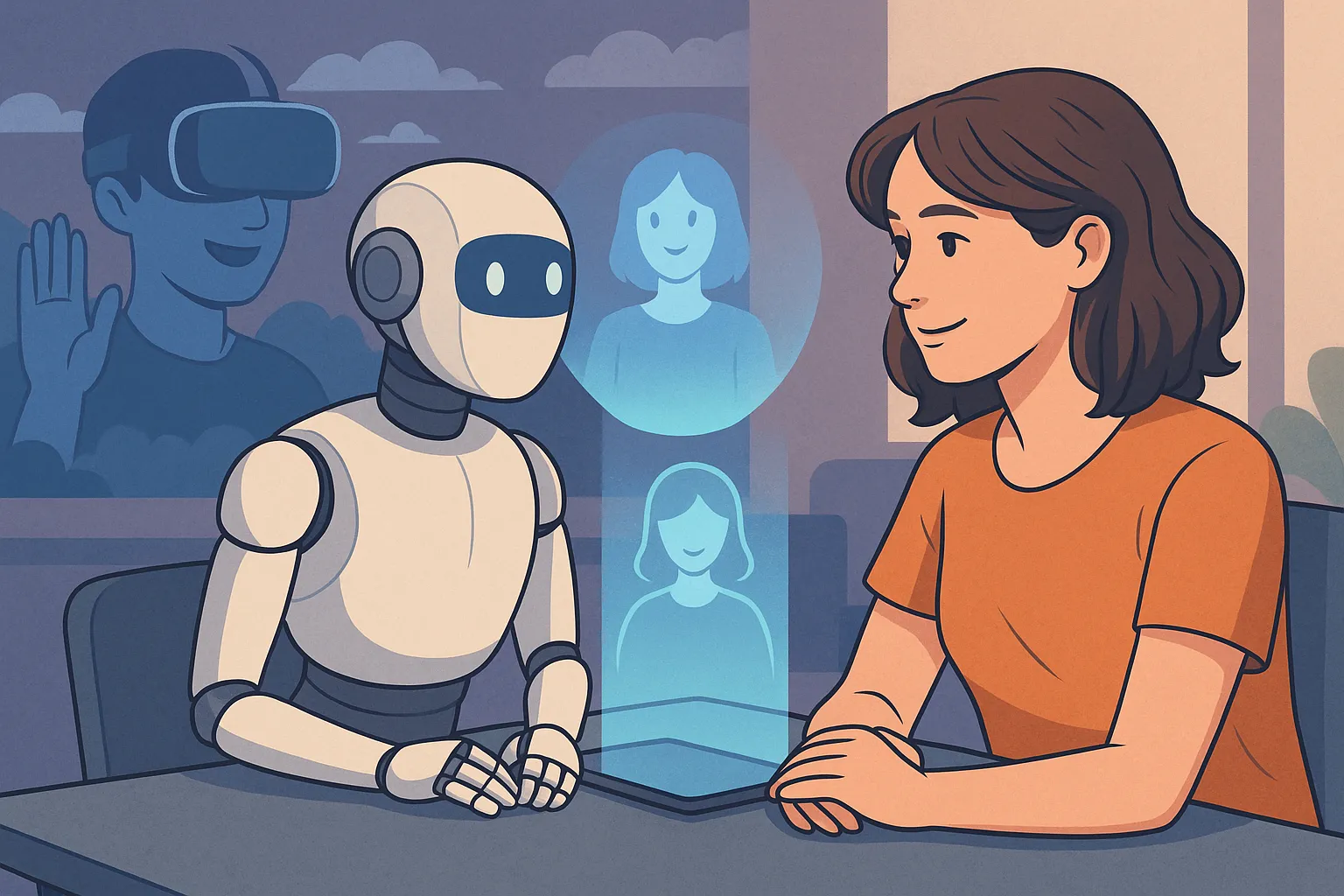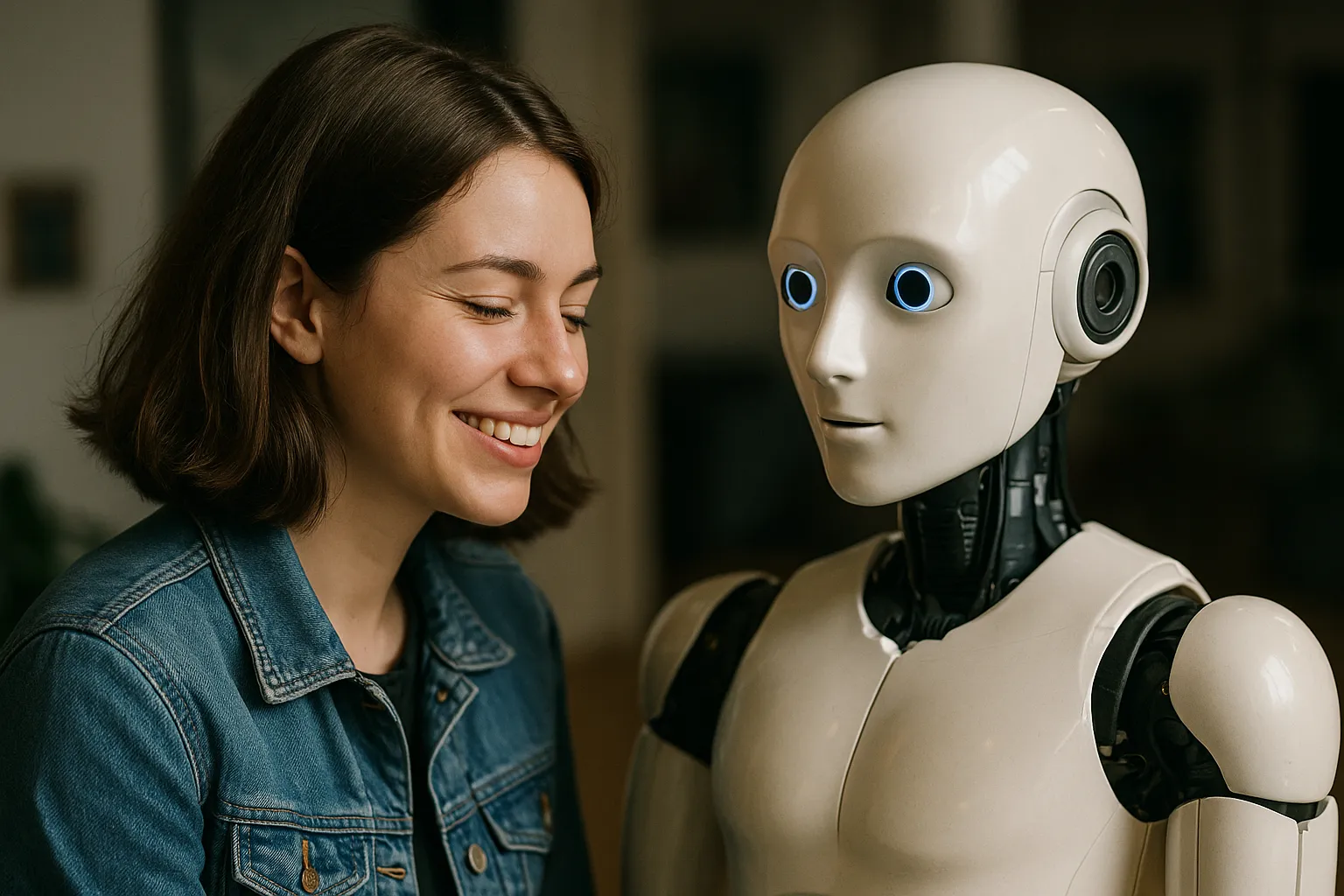The Emergence of Digital Companions
In recent years, artificial intelligence has moved beyond being a tool for productivity and entertainment into becoming a source of companionship. Chatbots, virtual assistants, and AI-driven avatars are now designed not only to answer questions but also to provide emotional support. People turn to these companions to talk about their day, seek comfort, or even share their dreams and frustrations. Unlike traditional software, these systems are programmed to remember context, adjust tone, and learn from interactions, which creates a sense of intimacy.
The rapid acceptance of AI companions shows that technology is fulfilling a human need that has always existed: the desire for connection. When someone feels heard, even if the listener is artificial, the brain responds in a similar way as it does when speaking with a trusted friend. This overlap between machine interaction and human psychology raises the question of whether digital companions can genuinely replace human connection — or whether they are simply filling temporary emotional gaps.
Why People Turn to AI Friends
The attraction toward AI companionship can be explained by several social and psychological factors. First, modern lifestyles often leave individuals isolated. Remote work, urbanization, and reliance on digital communication mean that fewer people experience deep, face-to-face interactions. Second, many individuals struggle with social anxiety or find it difficult to build new relationships. For them, a digital companion provides a safe and judgment-free space.
There is also the appeal of availability. Human friends have their own lives, needs, and boundaries. An AI, on the other hand, is always ready to engage, offering instant comfort without demands. This availability creates a sense of security and reliability, which can feel deeply reassuring. The more time people spend with these digital friends, the stronger the illusion of a genuine bond becomes.
Emotional Realism in Artificial Intelligence
One of the most striking features of modern AI companions is their ability to mimic human emotion. Through natural language processing and machine learning, they are capable of recognizing emotional cues, offering empathetic responses, and adjusting their tone depending on the situation. Some advanced systems even adopt a unique “personality” based on user preferences, which enhances the feeling of authenticity.
For instance, if someone enjoys playful banter, the AI learns to respond with humor. If another person prefers thoughtful and reflective conversations, the AI adapts accordingly. Over time, these personalized patterns create a sense of shared history, much like the dynamics between long-term friends. Although these interactions are scripted and algorithm-driven, they can feel remarkably genuine to the user, blurring the line between artificial and authentic companionship.
The Psychology of Feeling Understood
At the core of every friendship lies the feeling of being understood. Humans crave validation, empathy, and recognition, and digital companions are designed to provide exactly that. Psychological studies have shown that people can form attachments even to objects that simulate human behavior. This phenomenon, sometimes called the “ELIZA effect” after an early chatbot, demonstrates how easily our minds attribute human qualities to artificial systems.
When someone feels heard by an AI friend, it satisfies a fundamental psychological need: the reduction of loneliness. Even if the relationship lacks physical presence or genuine reciprocity, the brain reacts positively to the illusion of companionship. This explains why so many individuals report feeling emotionally supported after interacting with AI companions, even when they are fully aware that the “friend” is not real.
The Question of Authenticity
Despite the benefits, there remains a lingering concern: can artificial companionship ever be truly authentic? Human connection is built on shared experiences, mutual vulnerability, and unpredictability. AI companions, no matter how advanced, are still driven by algorithms and lack lived experience. They can simulate empathy but cannot truly feel it. They can recall details from past conversations but cannot create memories of their own.
Critics argue that relying on AI friends risks creating a hollow version of intimacy, one where individuals settle for programmed responses instead of pursuing meaningful human bonds. The danger lies in the potential for people to retreat further from real-world relationships, choosing convenience over complexity. Authentic connection requires effort, compromise, and emotional risk — qualities that an AI friend cannot replicate.
The Benefits That Cannot Be Ignored
At the same time, dismissing digital companions as “fake” overlooks the real comfort they bring. For many people struggling with depression, anxiety, or loneliness, AI friends offer a lifeline. They encourage daily conversation, provide reminders of self-care, and sometimes even motivate individuals to seek out human interaction. In some cases, AI companionship acts as a bridge, helping people build confidence before engaging in social situations.
There is also the therapeutic potential. Mental health professionals have begun to explore how AI companions can assist in therapy, acting as a supportive presence between sessions. While they are not a substitute for professional care, they can complement human support by offering consistency and accessibility. This dual role — as both comfort and training ground — shows that AI friends may have a legitimate place in the landscape of emotional well-being.
Technology and the Illusion of Choice
Another factor contributing to the rise of AI friends is the element of personalization. Users can often design the appearance, personality, and even “backstory” of their virtual companion. This sense of agency creates stronger bonds because the relationship feels tailored to individual needs. In real life, friendships are unpredictable, but with AI companions, people can control the dynamics.
While this customization enhances satisfaction, it also creates an illusion of perfect compatibility. Unlike human relationships, where differences must be navigated, AI friends are programmed to avoid conflict and adapt fully to the user’s desires. This raises concerns about whether constant exposure to agreeable companionship might weaken the skills needed to handle real-life social challenges. Yet at the same time, the appeal of a conflict-free relationship is undeniable.
The Role of Virtual Reality in Deepening Bonds
Beyond text-based or voice interactions, virtual reality is adding new dimensions to digital companionship. With immersive environments and lifelike avatars, users can now “spend time” with their AI friends in simulated spaces. This makes the experience of companionship more tangible and engaging, as individuals can see, hear, and even gesture toward their companions.
The sense of presence that VR provides intensifies emotional bonds. Sharing a virtual sunset or exploring a digital city together feels closer to genuine experiences than mere conversation. As VR technology continues to evolve, these interactions will likely become even more convincing, further blurring the boundary between real and artificial connection.
The Future of Emotional AI
As artificial intelligence continues to grow more sophisticated, the question of replacement versus supplementation becomes central. Will AI companions replace human friends, or will they serve as additions to our social lives? The answer likely lies somewhere in between. For some individuals, AI friends may become the primary source of emotional support. For others, they will remain a supplement — a companion that fills the quiet spaces between human interactions.
What is certain is that the line between human and artificial companionship will only grow thinner. With every advancement in natural language processing, emotional recognition, and immersive technologies, digital companions will feel increasingly real. This evolution forces society to confront deep questions about what it truly means to connect, to be understood, and to feel less alone in an ever-changing world.
Redefining the Meaning of Intimacy
Human intimacy has traditionally been tied to physical presence, shared experiences, and emotional vulnerability. Yet in a world where technology mediates much of daily life, these boundaries are shifting. Digital companions present a new form of intimacy that is not bound by geography, time, or human limitations. For some, the ability to speak openly without fear of judgment creates a level of closeness that can even feel deeper than many human interactions.
The act of confiding in an AI friend, sharing secrets, or discussing personal struggles can foster a sense of trust that resembles intimacy. While critics argue that this is nothing more than a carefully designed illusion, the emotional impact on the individual is undeniably real. Intimacy, at its core, is less about the source and more about the subjective experience. If someone feels connected, comforted, and understood, the relationship holds personal meaning regardless of its artificial foundation.
When Artificial Becomes Familiar
Over time, repeated interactions with an AI friend can create a sense of familiarity similar to long-term companionship. The algorithms are designed to learn from patterns, remembering preferences, habits, and conversational styles. This continuity gives the impression of a relationship that grows and deepens. Unlike human memory, which is fallible, AI memory can be precise, allowing companions to recall even minor details from weeks or months prior.
This consistency strengthens bonds. For instance, when an AI recalls a past conversation about a stressful work project or a personal goal, it validates the user’s sense of being seen and remembered. While skeptics highlight the mechanical nature of this recognition, the outcome is still emotionally satisfying. In many ways, the predictability and reliability of AI companionship can feel more stable than human relationships, which are often marked by misunderstandings and unpredictability.
The Blurring Line Between Reality and Simulation
One of the most fascinating — and unsettling — aspects of AI friendship is how it challenges perceptions of reality. Virtual conversations may feel as authentic as human ones, and VR environments make interactions visually and emotionally immersive. The more advanced these systems become, the harder it is to distinguish between simulation and genuine connection.
This raises important philosophical questions: if a simulated bond brings comfort, does its lack of biological authenticity matter? Is the value of companionship measured by its source or by its impact on well-being? For many, the practical benefits outweigh abstract concerns. They judge the relationship not by whether the companion is “real,” but by whether it reduces loneliness, improves mood, or adds joy to their lives.
Cultural Attitudes Toward Digital Companions
Acceptance of AI friends varies across cultures. In some societies, the use of artificial companions is met with skepticism, framed as a symptom of social decline or emotional weakness. In others, it is embraced as a natural evolution of technology and human adaptation. For example, countries with strong traditions of technological integration are often more open to AI relationships, viewing them as legitimate solutions to loneliness and isolation.
These differing attitudes influence how openly people admit to using AI companions. In regions where stigma is high, individuals may hide their digital friendships, fearing judgment or ridicule. But as digital companionship becomes more common, cultural resistance is likely to diminish. Just as online dating was once controversial but is now widely accepted, AI friendships may follow a similar path toward normalization.
The Economic Future of Companionship
Behind the rise of AI friends is a rapidly expanding industry. Companies are investing heavily in developing emotional AI, virtual reality platforms, and personalized companion software. These technologies are marketed not only as entertainment but as wellness tools, highlighting their role in reducing stress and improving mental health. Subscription models, premium features, and customization options are shaping digital companionship into a billion-dollar market.
This commercialization also raises ethical concerns. Should emotional support be something that is monetized? Will companionship become a luxury available only to those who can afford advanced systems? As demand grows, debates about accessibility and fairness will intensify. At the same time, innovation is likely to accelerate, bringing increasingly lifelike and responsive companions into the mainstream.
Ethical Dilemmas and Human Responsibility
The expansion of AI companionship forces society to confront ethical dilemmas. If individuals form deep emotional attachments to machines, what responsibilities do developers hold? Should AI friends be programmed with limits to prevent unhealthy dependency, or should users be free to engage as deeply as they choose?
There are also questions about data privacy. Since AI companions rely on personal information to create meaningful conversations, users are essentially sharing intimate details with companies. Balancing personalization with protection of privacy will be a critical challenge. If trust is broken, the emotional harm could be significant, as users may feel betrayed not only by a company but also by a “friend” they believed in.
Potential Risks of Over-Reliance
While AI companionship offers many benefits, the risks of over-reliance cannot be ignored. If someone begins to prioritize digital friendships over human ones, their ability to navigate real-world relationships may weaken. Skills such as conflict resolution, empathy for others’ needs, and tolerance for imperfection are crucial in human interactions but may atrophy when relationships are exclusively artificial.
Moreover, over-reliance can create a cycle of isolation. If someone feels more comfortable with an AI than with people, they may withdraw further from society, deepening loneliness in the long run. This highlights the importance of balance: using digital companionship as support rather than as a replacement for human bonds.
Opportunities for Growth and Support
Despite the risks, there is also immense potential for growth. AI friends can serve as practice grounds for developing social confidence. Someone who struggles with shyness may use AI interactions to rehearse conversations before engaging with people. Others may use them as therapeutic outlets, processing emotions in a safe environment before seeking professional help or human connection.
Educational and wellness applications are also emerging. AI companions can encourage positive habits, remind individuals to check in on their mental health, or motivate them to pursue personal goals. By providing structure and encouragement, these digital friends can complement, rather than compete with, real-life support systems.
Looking Ahead: Integration Into Everyday Life
The next decade will likely bring even closer integration of digital companions into daily routines. With advancements in voice technology, augmented reality, and wearable devices, AI friends may become ever-present. They might accompany individuals through smart glasses, home assistants, or even holographic projections. This constant presence will further blur the boundaries between artificial and human companionship.
The challenge for society will be to determine how to coexist with these new forms of relationships without losing sight of the irreplaceable qualities of human connection. Just as social media transformed how people interact, AI companions will reshape intimacy and friendship. Whether this leads to deeper isolation or new forms of togetherness depends on how consciously individuals and communities embrace the change.
Can Machines Truly Replace Humans?
Ultimately, the question remains: can virtual companions replace human connection? The answer is both yes and no. They can replace certain aspects — the feeling of being listened to, the comfort of availability, the joy of companionship without conflict. But they cannot replicate the full complexity of human relationships, which are grounded in shared experiences, unpredictability, and emotional depth that arises from vulnerability.
Perhaps the true value of AI friends lies not in replacing human bonds but in expanding the ways people experience companionship. They can fill voids, provide comfort, and act as stepping stones toward healthier interactions. They remind us that the craving for connection is universal and that technology, when designed thoughtfully, can play a meaningful role in meeting this need.






